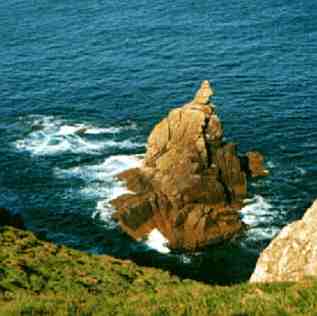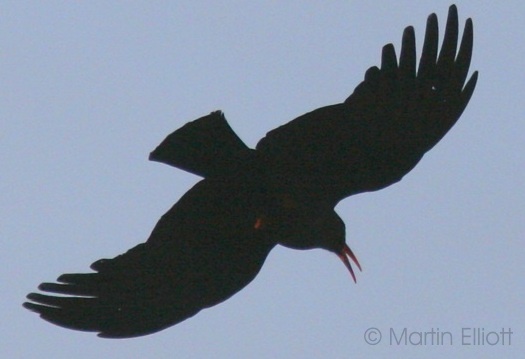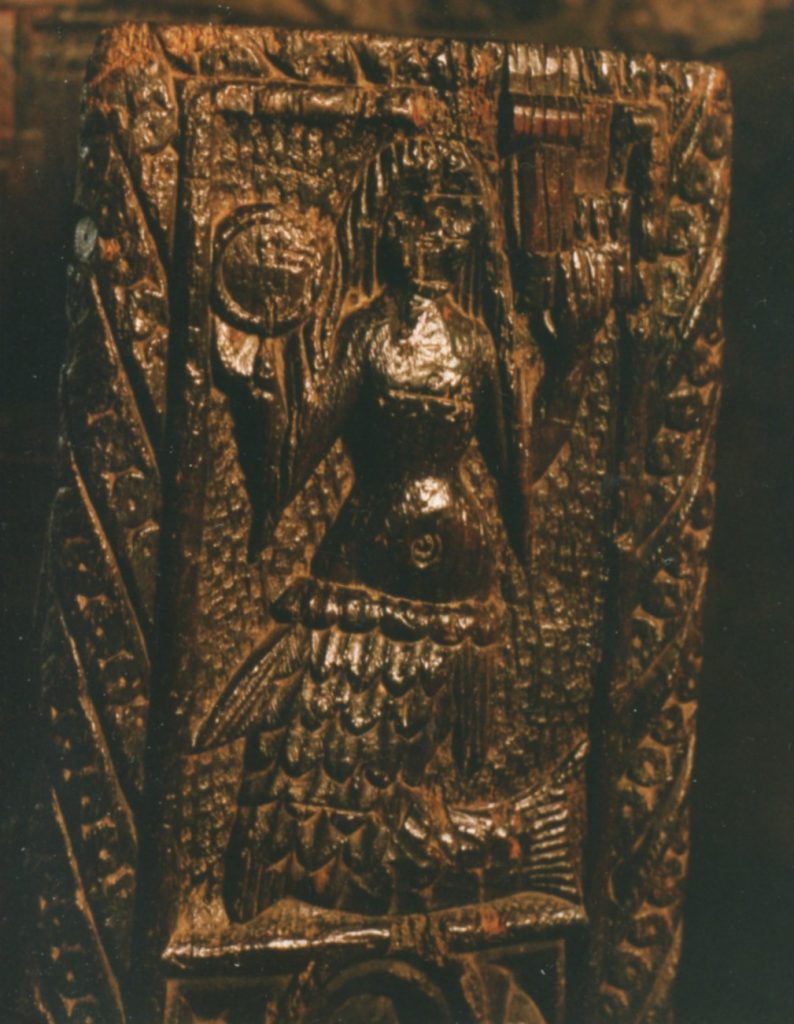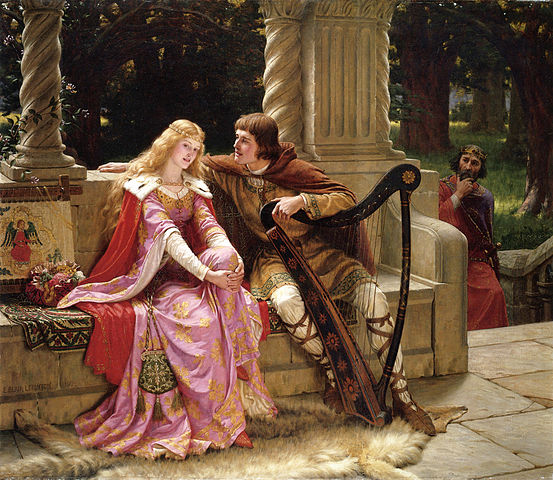The Whooper of Sennen Cove
Accordingly to legend, Sennen Cove was once haunted by a mysterious fog that could descent seemingly out of nowhere on clear days and was accompanied by a strange whooping sound. Locals referred to this phenomenon as the ‘Whooper’ and believed it to be a warning not to put to sea due to an impending storm. However, two local fishermen decided not to heed the Whooper’s warning and sailed out into the impenetrable fog. Neither they nor the Whooper ever returned.
The Irish Lady – Pend-men-du
The Irish Lady rock lies in the sea below Pend-men-du point – the cliff above Sennen Cove on which stands the coastguard’s lookout. It is believed to be named after an Irish women who drowned in a shipwreck nearby. The ghost of the Irish lady is said by some to be a portent of doom to anyone unfortunate enough to witness her apparition sitting on the rock.

Cornish Piskies
Piskies are said to be Cornish fairy folk resembling pixies or elves. These mysterious beings can be quite mischievous and often play tricks on unwary travellers. Those who arrive late, or find themselves lost, are often said to have been “pisky led”. Apparently, this can be averted by wearing an article of clothing inside out.
The king and queen of the Cornish piskies are Jack O’Lantern and Joan the Wad – wad meaning a wooden torch. They are considered to bring good luck and are the Cornish versions of Will-o’-the-wisp.
Dr Thomas Quiller Couch, a 19th-century folklorist recorded the following rhyme used in Polperro, Cornwall:
“Jack o’ the lantern! Joan the wad,
Who tickled the maid and made her mad
Light me home, the weather’s bad.”
Knockers
Knockers is a name given by Cornish Miners to a mythical, subterranean, gnome-like creature that they believed would lead them to the best seams of tin or warn them of an impending mine collapse. They could also be mischievous, sometimes stealing tools and food.
Miners would leave the crust from their Cornish pasties for the Knockers to eat to show their appreciation and keep them from playing tricks.
The Cornish Chough

The chough (pronounced chuff) is a crow-like bird that has long been a symbol of Cornwall, used in heraldry and appearing on the Cornish coat of arms. However, choughs only started breeding in Cornwall again in 2001, after a long absence since the 1970s. Genetic testing has shown that the bird returned from Ireland.
Arthurian legend says that King Arthur was transformed into a Chough – the bird’s distinctive red beak and feet representing his bloody demise in battle. Perhaps the return of the Chough to Cornwall is the fulfillment of the prophecy that King Arthur will one day return. Because of this association with King Arthur, it is believed that killing a chough will bring bad luck.
See our birds page for more photos of birds that can be spotted in Cornwall.
Tom Bawcock of Mousehole
Tom Bawcock is said to have been a fisherman who saved the village of Mousehole from famine in the 16th century. Due to a particular harsh winter, it hadn’t been possible for Mousehole’s fisherman to provide fish for the village, which found itself on the brink of starvation. On the 23rd of December, Tom Bawcock braved the storm and returned with a huge catch of seven types of fish that were then baked together in an enormous pie. This date is celebrated in Mousehole as Tom Bawcock’s Eve, when the traditional stargazy pie is eaten to commemorate his bravery. This pie traditionally has the heads of pilchards poking through the crust as proof of the fish inside.
The festival could even date back to pre-Christian times when a pie of many different types of fish was made in anticipation of the catches the local fishermen hoped to make.
The following traditional song was published by Robert Morton Nance in the magazine Old Cornwall in 1927, sung to the tune of the Cornish traditional Wedding March:
“A merry plaas you may believe
woz Mowsel pon Tom Bawcock’s Eve.
To be theer then oo wudn wesh
To sup o sibm soorts o fesh!
Wen morgee brath ad cleard tha path
Comed lances for a fry,
An then us had a bet o scad
an starry gazee py.
Nex cumd fermaads, braa thustee jaads
As maad ar oozles dry,
An ling an haak, enough to maak
a raunen shark to sy!
A aech wed clunk as ealth wer drunk
En bumpers bremmen y,
An wen up caam Tom Bawcock’s naam
We praesed un to tha sky.”
The Mermaid of Zennor
The figure of a mermaid is carved into a wooden pew in St Senara church in the village of Zennor on the northern Penwith coast. It is believed to be over 600 years old and commemorates the story of a Mermaid named Morveren who is said to have fallen in love with a resident of Zennor known as Mathew Trewella.
Enticed by his singing, the mermaid would visit the church in human form and is said to have used the very seat, known as the Mermaid Chair, that is now carved with her likeness.
When Mathew saw the beautiful mermaid, he fell in love and followed her back to her home in Pendour Cove, on the coast to the north of Zennor, where she told Mathew she must return to the sea or die. Mathew determined to go with her and he followed her into the sea where he was transformed into a merman. It is said that Mathew’s singing can still be heard on the wind above the cove to this day.
A later story tells of a Mermaid, believed to be Morveren, who appeared to a group of sailors and asked them if they could raise their anchor so that she could reach her children, which were presumed to be Mathew’s.

Lyonesse
The legendary kingdom of Lyonesse, stretching beyond the coast of Land’s End to the Isles of Scilly, is said to have sunk beneath the waves in a single night on 11 November 1099 (or 1089 in some versions of the tale). Only one man, known as Trevilian, is said to have escaped on his white horse.
Although it’s likely that the Isles of Scilly were once a single large island that separated into smaller islands due to a rapid rise in sea-level, there is no real evidence to suggest a larger area of land has been submerged. It is often claimed, however, that the bells of sunken churches can still be heard ringing beneath the waves.
Tristram and Iseult
Lyonesse is mentioned in Arthurian legend as well as the story of Tristan and Iseult. This legend tells of a Cornish knight, Tristram, who falls in love with an Irish princess, Iseult (sometimes known as Isolde). Tristram is sent to escort Iseult from Ireland to marry his uncle, King Mark of Cornwall. However, the pair drink a love potion on the voyage, believing it to be wine, and fall madly in love.
Algernon Charles Swinburne’s poem Tristram of Lyonesse published in 1882 includes the following opening lines to its first canto, The Sailing of the Swallow:
“About the middle music of the spring
Came from the castled shore of Ireland’s king
A fair ship stoutly sailing, eastward bound
And south by Wales and all its wonders round
To the loud rocks and ringing reaches home
That take the wild wrath of the Cornish foam,
Past Lyonesse unswallowed of the tides
And high Carlion that now the steep sea hides
To the wind-hollowed heights and gusty bays
Of sheer Tintagel, fair with famous days.”

